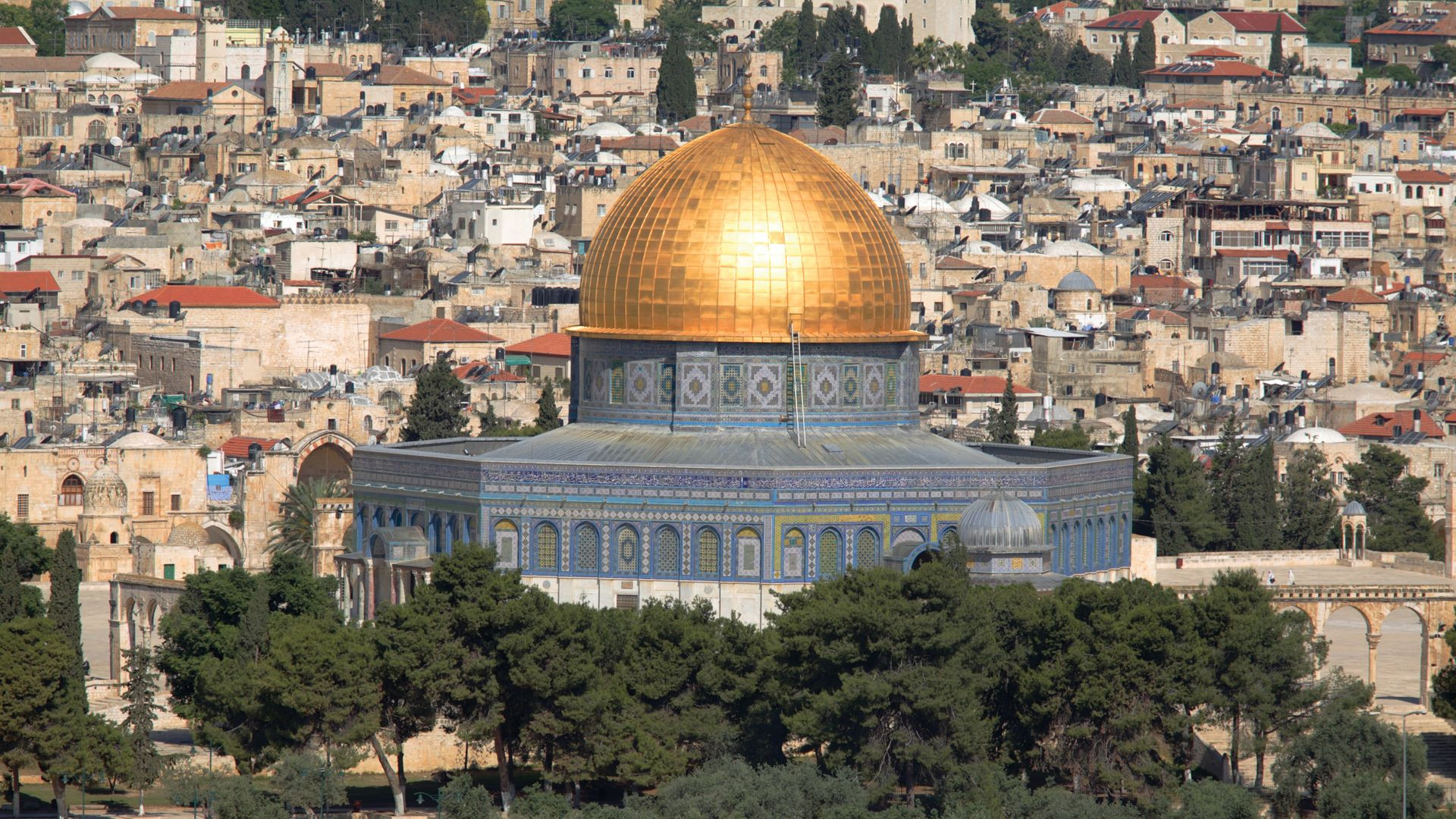The Dome Of The Rock stands as one of Jerusalem’s most iconic landmarks, a magnificent shrine that holds immense religious and historical significance. Located on the Temple Mount, or Haram al-Sharif as it is known to Muslims, this golden-domed structure is not only a breathtaking architectural achievement but also the oldest extant Islamic monument in the world. Commissioned by the Umayyad caliph Abd al-Malik ibn Marwan in the late 7th century CE, the Dome of the Rock has been a pivotal site for both Islamic and Jewish traditions for centuries.
Historical and Religious Significance
The Dome of the Rock’s location is at the heart of its profound importance. Situated on a raised plaza revered as al-Ḥaram al-Sharīf (“The Noble Sanctuary”) by Muslims and the Temple Mount by Jews, it occupies the very ground where the ancient Temple of Jerusalem once stood. For Muslims, the rock enshrined within the Dome is of paramount significance; it is believed to be the spot from which the Prophet Muhammad ascended to heaven during the Miʿrāj, his miraculous night journey to meet God. This event is a cornerstone of Islamic faith, making the Dome of the Rock a deeply venerated site for pilgrimage and prayer.
Furthermore, its proximity to the Al-Aqsa Mosque, located on the southern edge of the same plaza, underscores its importance within the Islamic world. Muslims believe that Prophet Muhammad was miraculously transported to Al-Aqsa Mosque from Mecca on the same night as the Mi’raj, an event known as Isra’. Often, the term “Al-Aqsa Mosque” is used to encompass the entire Noble Sanctuary, including the Dome of the Rock, highlighting the interconnected religious significance of the area.
Architectural Grandeur and Byzantine Influence
The architecture of the Dome of the Rock is a testament to the early Islamic world’s artistic and engineering capabilities, drawing inspiration from Byzantine architectural traditions while forging a distinct Islamic visual identity. Constructed in the 7th century, it represents a pivotal stage in the evolution of Islamic art and architecture.
 Video showcasing the historical context and significance of the Dome of the Rock as an early Islamic monument in Jerusalem.
Video showcasing the historical context and significance of the Dome of the Rock as an early Islamic monument in Jerusalem.
The structure itself is centrally planned, featuring an octagonal base that supports a magnificent gilded wooden dome. This dome, approximately 65 feet in diameter, is elevated on a drum and rests upon a circle of 16 piers and columns. Surrounding this central circle is an octagonal arcade composed of 24 piers and columns, creating layers of architectural complexity and visual harmony. Beneath the dome, a section of the sacred rock is visible, protected by a railing, and a stairway descends to a natural cave located underneath. The outer walls mirror the octagonal shape, each side measuring roughly 60 feet wide and 36 feet high, punctuated by numerous windows that allow light to filter into the shrine.
Exquisite Interior and Exterior Decoration
Both the interior and exterior surfaces of the Dome of the Rock are lavishly adorned, reflecting the artistic sophistication of the Umayyad period. Marble panels, intricate mosaics, and metal plaques cover the walls, creating a rich tapestry of textures and colors. While the mosaic techniques are reminiscent of Byzantine artistry found in public buildings and churches of the era, the Dome of the Rock’s mosaics diverge by excluding human or animal figures. Instead, they feature elegant Arabic script and stylized vegetal patterns, interwoven with depictions of jewels and crowns. These decorative elements not only enhance the aesthetic beauty of the shrine but also carry symbolic and religious meaning. Arabic religious inscriptions are prominently displayed around the octagonal arcades, further emphasizing the Islamic character of this iconic monument.
In conclusion, the Dome of the Rock is more than just a visually stunning structure; it is a powerful symbol of faith, history, and architectural innovation. Its enduring presence in Jerusalem continues to inspire awe and reverence, marking it as a truly exceptional landmark in the global landscape of religious and cultural heritage.